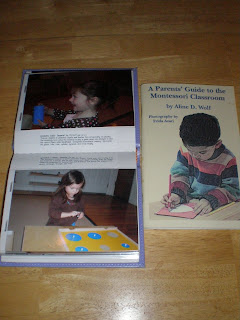The children have been learning about teeth and oral health. Today, they were treated to a visit by local pediatric dentist Timothy Nichols of Little Britches Pediatric Dentistry.
Quite honestly, I must say that Dr. Nichols is the most delightful dentist I have ever met; he has an amazing gift for teaching children and putting them at ease. He was knowledgeable, kind, approachable, and so much fun!
Dr. Nichols read
Moose's Loose Tooth by Jacqueline Clarke (which had the children both riveted and giggling uncontrollably), taught the children proper tooth brushing techniques, discussed the importance of healthy foods, allowed the children to play dentist to his dragon puppet by using a dental mirror to count his teeth and check for cavities, and left the children with new

toothbrushes and coloring books! In every respect, it was exactly what you would wish for your child's first interactions with a dentist- a fun, informative, non-threatening experience. I am sure that his visit will help the children to practice good oral hygiene and I know it left more than one child clamoring for a visit to the dentist. We sincerely thank him for making time to come and share his talents with us.
If your family is looking for a pediatric dentist, I cannot recommend him enough (I only wish he took adults too!). To schedule an appointment, or for more information about his practice, please call 303.651.3733 or visit their website at
http://www.littlebritches.com/

One of the sad statistics that Dr. Nichols shared with us was that although the number of cavities have declined in other age groups, their prevalence in children has remained constant. In fact, the US Surgeon general has called dental and oral diseases a "silent epidemic." More than half of all children aged 5-9 have at least one cavity or filling. Cavities are the most common chronic diease affecting children in the United States; they can lead to pain, infection, tooth loss, and may increase the risk of coronary heart disease.
At Bloom! we feel that it is important to teach children good oral hygiene at a young age. We follow the National Resource Center for Health and Safety in Child Care and Early Education's "Guidelines for Good Dental Practices in Child Care." In addition to teaching children about oral health in our curriculum, we serve meals and snacks that limit your child's intake of sweets, serve milk and water (not sugary juices), recommend that all children are seen twice a year by a dentist, and supervise the brushing of teeth after every meal.
Needless to say, after his visit the children were very interested in toothbrushing. In fact, the new toothbrushing practical life lessons got so much use that the classroom truly smelled minty fresh! Perhaps we have a future dentist or two among us...



















 The children have sustained their interest in learning the geometric forms. They demonstrate a high degree of awareness and interest in geometric forms in their environment and palpable joy in being able to reproduce them.
The children have sustained their interest in learning the geometric forms. They demonstrate a high degree of awareness and interest in geometric forms in their environment and palpable joy in being able to reproduce them.














 In Montessori classrooms the children are permitted to freely choose among a great variety of growth-promoting materials during the independent work period. As a result of their freedom to choose, it is always very interesting to see which materials the children are most interested in using (which can vary dramatically from year to year). Often, children will observe another student using a material and will want to imitate their use of it.
In Montessori classrooms the children are permitted to freely choose among a great variety of growth-promoting materials during the independent work period. As a result of their freedom to choose, it is always very interesting to see which materials the children are most interested in using (which can vary dramatically from year to year). Often, children will observe another student using a material and will want to imitate their use of it.













